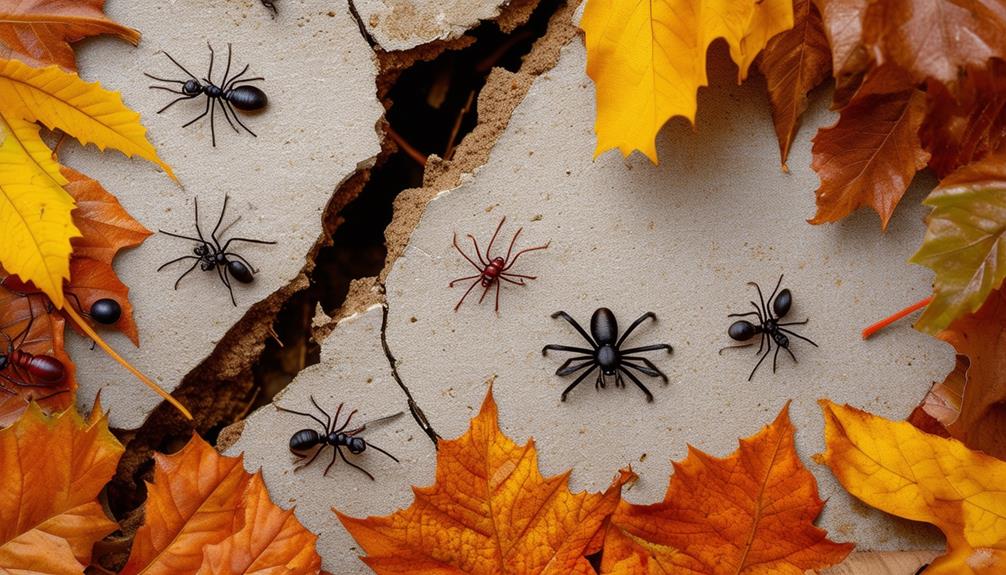In the realm of plumbing and household concerns, the possibility of a snake crawling through one’s toilet may seem like an unsettling and peculiar thought. However, it is essential to approach this topic objectively and scientifically to address any misconceptions or fears that may arise.
This article aims to provide an informative and knowledgeable exploration of the question, ‘Can a snake crawl through my toilet?’ by delving into the anatomy of snakes, the design of plumbing systems, rare instances of snake intrusion, and steps to prevent such occurrences.
To truly understand the plausibility of a snake entering through a toilet, we must first examine the anatomy of these reptiles. Snakes possess a remarkable ability to navigate through various environments, thanks to their slender and flexible bodies. Their long, cylindrical shape enables them to maneuver through tight spaces, allowing them to explore openings that may appear inconceivable to larger animals.
However, it is crucial to note that snakes are cold-blooded creatures that require warmth and moisture to survive, making them less inclined to venture into the unfamiliar and often dry confines of a plumbing system. Nonetheless, understanding their physical capabilities is vital in evaluating the possibility of a snake making its way into your home through the toilet.
Key Takeaways
- Snakes have the ability to navigate through tight spaces, including toilets, due to their slender and flexible bodies.
- Proper plumbing system design and maintenance, such as installing a toilet flapper guard, can help prevent snake intrusion through toilets.
- Snake repellent products can be used as proactive measures to deter snakes from approaching the vicinity of the home and toilets.
- Understanding snake behavior and their natural habitats is crucial for conservation efforts and addressing misconceptions surrounding snake intrusion in toilets.
Anatomy of a Snake
The anatomical structure of a snake, including its elongated body and flexible spine, allows it to navigate through tight spaces such as pipes, potentially enabling it to crawl through a toilet.
Snakes have evolved to move efficiently in their natural environments, which include a variety of habitats such as forests, grasslands, deserts, and even bodies of water. Their elongated bodies are made up of numerous vertebrae, connected by flexible joints, which allow them to slither and maneuver through narrow openings. Additionally, snakes lack limbs, which further facilitates their ability to squeeze through tight spaces.
Snake behavior also plays a role in their ability to navigate through confined spaces. Snakes are known to be skilled climbers and are capable of ascending trees, walls, and even buildings. They use their muscular bodies and scales to grip onto various surfaces, enabling them to move vertically and horizontally. This adaptability and agility are essential for their survival in the wild, where they may encounter obstacles or seek out prey in hard-to-reach locations.
Transitioning to the subsequent section about plumbing systems and design, it is important to understand the unique attributes of snakes and their ability to navigate through tight spaces. Plumbing systems are designed to efficiently transport water and waste, but understanding the potential for snakes to access these systems is crucial in ensuring their integrity and preventing any unwanted encounters.
Plumbing Systems and Design
Plumbing systems and design play a crucial role in ensuring the functionality and safety of residential sanitation infrastructures. Toilet installation, maintenance, and repair are key aspects of plumbing systems that require careful consideration and expertise. Innovative toilet designs have emerged in recent years, aiming to improve water efficiency, hygiene, and overall user experience.
Here are four important factors to consider when it comes to plumbing systems and design:
- Proper venting: A well-designed plumbing system includes proper venting to prevent sewer gases from entering the home. Vent pipes allow for the release of air pressure and ensure that waste flows smoothly through the pipes. Without proper venting, the toilet may not flush effectively, and foul odors may permeate the bathroom.
- Adequate water supply: Toilets rely on a steady water supply to flush waste effectively. Plumbing systems should be designed to provide sufficient water pressure and volume to ensure proper flushing. Insufficient water supply can result in clogged pipes and inefficient waste removal.
- Reliable drainage: The drainage system in a toilet is designed to remove waste and wastewater from the home. Proper slope and pipe sizing are crucial to ensure smooth flow and prevent blockages. Regular maintenance, such as clearing debris from drain traps and pipes, is essential to prevent clogs and maintain optimal drainage.
- Innovative toilet designs: With advancements in technology, innovative toilet designs have emerged to address various concerns. These designs may include features such as dual-flush options, water-saving mechanisms, and self-cleaning capabilities. Incorporating these innovative designs into toilet installations can improve water efficiency, reduce maintenance needs, and enhance user comfort.
Understanding the importance of plumbing systems and design is crucial to ensure the proper functioning of toilets and overall residential sanitation. In rare cases, however, snakes may find their way into toilets, presenting a unique and unexpected challenge.
Rare Cases of Snakes in Toilets
Instances of serpents unexpectedly appearing in residential toilets can be an alarming and distressing occurrence, triggering intense feelings of fear and anxiety among individuals.
While such incidents are rare, they do happen due to the behavior of certain snake species.
Snakes possess remarkable flexibility, allowing them to navigate through tight spaces.
When seeking shelter or following prey, they may enter plumbing systems or sewage pipes, eventually finding their way into toilets.
This behavior is typically observed in snakes that are excellent climbers and are adept at squeezing through small openings.
Understanding the behavior of snakes in relation to their environment is crucial for wildlife conservation efforts.
Snakes play an important role in ecosystems by controlling rodent populations and maintaining ecological balance.
However, human encounters with snakes, particularly in unexpected places like toilets, can lead to negative perceptions and fear-driven actions.
Educating individuals about snake behavior and their natural habitats can help foster a greater understanding and appreciation for these creatures.
By implementing measures to prevent snake intrusion, such as proper plumbing system design and maintenance, we can minimize the chances of these encounters and promote coexistence between humans and snakes.
Transitioning into the subsequent section about ‘steps to prevent snake intrusion’, it is important to take proactive measures to ensure the safety and peace of mind of individuals.
Steps to Prevent Snake Intrusion
To effectively protect homes from unwanted visitors, individuals can implement a series of preventative measures to fortify the integrity of their residential infrastructure. When it comes to preventing snake intrusion through toilets, proper toilet maintenance is crucial. Regularly inspecting and maintaining the plumbing system can help identify and address any potential entry points for snakes.
Additionally, individuals can consider installing a toilet flapper guard, which acts as a barrier to prevent snakes from entering through the toilet pipes. This simple and cost-effective solution can provide an extra layer of protection.
In addition to toilet maintenance, there are snake repellent products available in the market that can be used as a proactive measure. These repellents are designed to deter snakes from approaching the vicinity of the home, including toilets. Some common types of snake repellents include chemical sprays, granules, and ultrasonic devices. It is important to carefully follow the instructions provided by the manufacturer when using these products to ensure their effectiveness and safety.
By incorporating these preventative measures into their homes, individuals can significantly reduce the likelihood of snake intrusion through toilets.
Moving on to common misconceptions and urban legends surrounding snakes in toilets…
Common Misconceptions and Urban Legends
One prevailing myth that has captivated the public’s imagination involves the eerie notion of a mysterious creature slithering up from beneath the depths of the sewer system into the unsuspecting confines of a residential toilet bowl. This urban legend has gained traction over the years, leading many individuals to fear the possibility of encountering a snake in their own bathrooms.
However, it is important to address the misconceptions and clarify the reality of this situation.
To begin with, it is essential to debunk the myth that snakes can crawl through toilets. This misconception is rooted in a lack of understanding about the anatomy and behavior of snakes. Snakes, particularly larger species, are not physically capable of navigating the complex plumbing systems that connect residential toilets to the sewer system. The size and shape of the pipes make it virtually impossible for a snake to slither its way up into a toilet bowl. Furthermore, snakes are not naturally inclined to venture into such confined and unfamiliar spaces. They typically seek out environments that provide them with suitable shelter, food, and temperature conditions, which are not found in the sewer system.
The historical origins of urban legends related to snakes in toilets can be traced back to a combination of fear, fascination, and the human tendency to create narratives around mysterious or unusual occurrences. These urban legends often arise from isolated incidents or exaggerated stories that quickly spread through word of mouth or media outlets. The fear of encountering a snake in a place as intimate as a bathroom taps into our primal instincts and creates a sense of unease.
However, it is crucial to rely on scientific knowledge and factual evidence to dispel these misconceptions and alleviate unnecessary anxiety. By understanding the limitations of snakes and the realities of plumbing systems, we can confidently separate fact from fiction and put these urban legends to rest.
Frequently Asked Questions
How many species of snakes are there?
There are over 3,500 known species of snakes, classified into various families and genera. Snakes inhabit diverse habitats worldwide, including forests, grasslands, deserts, and aquatic environments. They display remarkable adaptations to their respective habitats, allowing for successful survival and reproduction.
Are all snakes capable of crawling through toilets?
Snakes possess a remarkable ability to navigate various terrains due to their flexible bodies and slender shape. However, snake behavior and toilet plumbing are unrelated, making it unlikely for all snakes to crawl through toilets.
Can snakes survive in the plumbing system?
Snake proofing techniques for homes are essential to prevent snakes from entering plumbing systems. Their presence can have significant ecological impacts, such as clogging pipes and disrupting water flow. Implementing effective preventative measures is crucial for maintaining a functional and safe plumbing system.
What are the most effective methods to prevent snake intrusion?
Effective methods to prevent snake intrusion include sealing all gaps and cracks in plumbing systems, installing tight-fitting lids on toilets and drains, ensuring proper ventilation, and using snake repellents or deterrents. Precautions should be taken to minimize potential snake entry points.
Are there any health risks associated with snakes in toilets?
Toilet hygiene is crucial to prevent potential health risks associated with snakes in toilets. Additionally, it is important to consider the potential phobias that may be triggered by the presence of snakes in such an intimate space.





